
Safari is a web browser developed by Apple. It is built into several of Apple's operating systems, including macOS, iOS, iPadOS and visionOS, and uses Apple's open-source browser engine WebKit, which was derived from KHTML.
The Worldwide Developers Conference (WWDC) is an information technology conference held annually by Apple Inc. The conference is currently held at Apple Park in California. The event is used to showcase new software and technologies in the macOS, iOS, iPadOS, watchOS, tvOS, and visionOS families as well as other Apple software; new hardware products are sometimes announced as well. WWDC is also an event hosted for third-party software developers that work on apps for iPhones, iPads, Macs, and other Apple devices. Attendees can participate in hands-on labs with Apple engineers and attend in-depth sessions covering a wide variety of topics.

Apple TV is a digital media player and microconsole developed and marketed by Apple. It is a small piece of networking hardware that sends received media data such as video and audio to a TV or external display. Its media services include streaming media, TV Everywhere-based services, local media sources, and sports journalism and broadcasts.

iOS is a mobile operating system developed by Apple exclusively for its devices. It was unveiled in January 2007 for the first-generation iPhone, which launched in June 2007. Major versions of iOS are released annually; the current stable version, iOS 18, was released to the public on September 16, 2024.
iOS is a mobile operating system developed by Apple Inc. and was first released as iPhone OS in June 2007, coinciding with the launch of the first generation iPhone. iPhone OS was renamed iOS following the release of the iPad, starting with iOS 4. With iOS 13, Apple began offering a separate operating system, iPadOS, for the iPad. iOS is also the foundation of the newer audioOS and tvOS, and shares some of its code with macOS. New iOS versions are released yearly, alongside new iPhone models. From the launch of the iPhone in 2007 until the launch of iPhone 4 in 2010, this occurred in June or July; since then, new major versions are usually released in September, with the exception of iOS 5, which released in October 2011. Since the launch of the iPhone in June 2007, there have been 18 major releases of iOS, with the current major version being iOS 18, released on September 16, 2024.
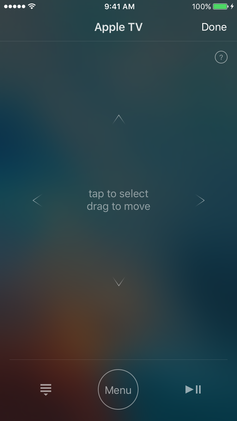
iTunes Remote is a software application developed by Apple Inc. for iOS devices that allows for remote control of Apple TV or iTunes library in an area with Wi-Fi connectivity using the proprietary Digital Audio Control Protocol (DACP). It is currently available as a free download from the App Store for iOS devices such as iPhone, iPod Touch, iPad, and Apple Watch.

AirPlay is a proprietary wireless communication protocol stack/suite developed by Apple Inc. that allows the streaming of multimedia and device screens, together with related metadata, between compatible devices. Originally implemented only in Apple's own software and hardware, the company has since licensed the AirPlay protocol stack to third-party manufacturers and it has been implemented on devices such as television sets and home audio systems. AirPlay works through either a direct peer-to-peer connection between devices or through an infrastructure local network.

iOS 6 is the sixth major release of the iOS mobile operating system developed by Apple Inc, being the successor to iOS 5. It was announced at the company's Worldwide Developers Conference on June 11, 2012, and was released on September 19, 2012. It was succeeded by iOS 7 on September 18, 2013.

HomeKit, also known as Apple Home, is a software framework and communication protocol developed by Apple Inc. that lets users configure, communicate with and control smart-home appliances using Apple devices. It provides users with a way to automatically discover such devices and configure them. By designing rooms, items and actions in HomeKit, users can enable automations in the home through a voice command to Siri or through Apple's Home app or third party apps. With HomeKit, developers are able to create complex applications in order to manage accessories at a high level.
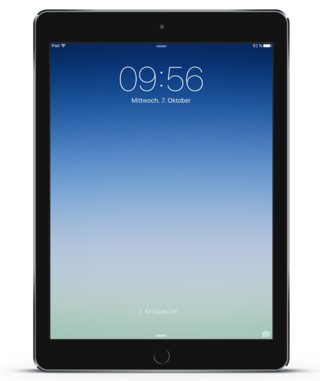
The iPad Air 2 is the second-generation iPad Air tablet computer developed and marketed by Apple Inc. It was announced on October 16, 2014, alongside the iPad Mini 3, both of which were released on October 22, 2014. The iPad Air 2 is thinner, lighter and faster than its predecessor, the first-generation iPad Air, and features Touch ID with the height, width and screen size the same as the iPad Air.
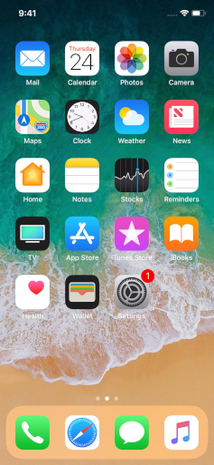
iOS 11 is the eleventh major release of the iOS mobile operating system developed by Apple, being the successor to iOS 10. It was announced at the company's Worldwide Developers Conference on June 5, 2017, and was released on September 19, 2017. It was succeeded by iOS 12 on September 17, 2018.

iOS 12 is the twelfth major release of the iOS mobile operating system developed by Apple. Aesthetically similar to its predecessor, iOS 11, it focuses more on performance than on new features, quality improvements and security updates. Announced at the company's Worldwide Developers Conference on June 4, 2018, iOS 12 was released to the public on September 17, 2018. It was succeeded for the iPhone and iPod Touch by iOS 13 on September 19, 2019, and for the iPad by iPadOS 13 on September 24, 2019. Security updates for iOS 12 continued for four years after the releases of iOS 13 and iPadOS 13 for devices unable to run the newer versions. The last update, 12.5.7, was released on January 23, 2023.

Swift Playgrounds is an educational tool and development environment for the Swift programming language developed by Apple Inc., initially announced at the WWDC 2016 conference. It was introduced as an iPad application alongside iOS 10, with a macOS version introduced in February 2020. It is available for free via Apple's App Store for iPadOS and Mac App Store for macOS.

iOS 13 is the thirteenth major release of the iOS mobile operating system developed by Apple for the iPhone, iPod Touch and HomePod. The successor to iOS 12, it was announced at the company's Worldwide Developers Conference (WWDC) on June 3, 2019, and released on September 19, 2019. It was succeeded by iOS 14, released on September 16, 2020.

macOS Catalina is the sixteenth major release of macOS, Apple Inc.'s desktop operating system for Macintosh computers. It is the successor to macOS Mojave and was announced at WWDC 2019 on June 3, 2019 and released to the public on October 7, 2019. Catalina is the first version of macOS to support only 64-bit applications and the first to include Activation Lock. It is also the last version of macOS to have the major version number of 10; its successor, Big Sur, released on November 12, 2020, is version 11. In order to increase web compatibility, Safari, Chromium and Firefox have frozen the OS in the user agent running in subsequent releases of macOS at 10.15.7 Catalina.

iPadOS 14 is the second major release of the iPadOS operating system developed by Apple for their iPad line of tablet computers. It was announced on June 22, 2020 at the company's Worldwide Developers Conference (WWDC) as the successor to iPadOS 13, making it the second version of the iPadOS fork from iOS. It was released to the public on September 16, 2020. It was succeeded by iPadOS 15 on September 20, 2021.

iOS 15 is the fifteenth major release of the iOS mobile operating system developed by Apple for its iPhone and iPod Touch lines of products. It was announced at the company's Worldwide Developers Conference on June 7, 2021, as the successor to iOS 14 and released to the public on September 20, 2021.
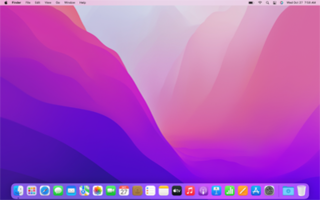
macOS Monterey is the eighteenth major release of macOS, Apple's desktop operating system for Macintosh computers. The successor to macOS Big Sur, it was announced at WWDC 2021 on June 7, 2021, and released on October 25, 2021. macOS Monterey was succeeded by macOS Ventura, which was released on October 24, 2022.
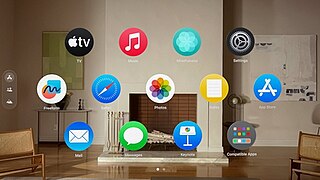
visionOS is a mixed reality operating system derived primarily from iPadOS core frameworks, and MR-specific frameworks for foveated rendering and real-time interaction. It was developed by Apple Inc. exclusively for its Apple Vision Pro mixed reality headset. It was unveiled on June 5, 2023, at Apple's WWDC23 event alongside the reveal of the Apple Vision Pro. The software released on February 2, 2024, shipping with the Apple Vision Pro.
















